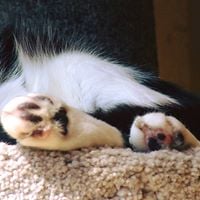What was used as currency in Siberia until the nineteenth century?
Until the nineteenth century, solid blocks of tea were used as currency in Siberia.
Tea bricks were in fact the preferred form of currency over metallic coins for the nomads of Mongolia and Siberia. The tea could not only be used as money and eaten as food in times of hunger but also brewed as allegedly beneficial medicine for treating coughs and colds. Due to the high value of tea in many parts of Asia, tea bricks were used as a form of currency throughout China, Tibet, Mongolia, and Central Asia. This is quite similar to the use of salt bricks as currency in parts of Africa. Until World War II, tea bricks were still used as a form of edible currency in Siberia.
Tea bricks for Tibet were mainly produced in the area of Ya'an (formerly Yachou-fu) in Sichuan province. The bricks were produced in five different qualities and valued accordingly. The kind of brick which was most commonly used as currency in the late 19th and early 20th century was that of the third quality which the Tibetans called "brgyad pa" ("eighth"), because at one time it was worth eight Tibetan tangkas (standard silver coin of Tibet which weighs about 5.4 grams). Bricks of this standard were also exported by Tibet to Bhutan and Ladakh.
To produce a tea brick, ground or whole tea is first steamed, then placed into one of a number of types of press and compressed into a solid form. The pressed blocks of tea are then left to dry in storage until a suitable degree of moisture has evaporated.
More Info:
en.wikipedia.org






